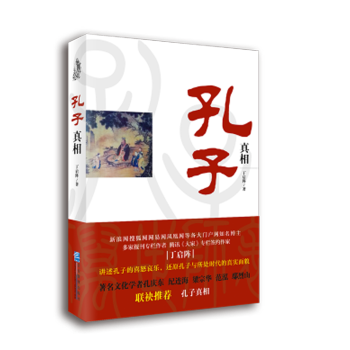

具体描述
编辑推荐
本书由"东方与西方""不同的无声语言""不同的思维方式""不同的文化取向""不同的文化本位"五大部分组成,每部分由不同章节构成,共20章,有针对性地对冲突、碰撞、趋同语境下的中西文化进行对比研究,总结其差异,挖掘差异背后的影响因素。另外,中国文化长期以来广纳百川,西方文化兼收并蓄,以静态的文字对动态的中西文化进行比较难度很大,有鉴于此,本书聚焦中西文化中传统而稳定的部分,通过案例进行比较,以助读者了解中西文化的异同并能用新的眼光审视自己的文化。内容简介
在客观再现中西方学者有关中西方文化差异研究成果的基础上,本教材具体内容以近年来的大量跨文化交流案例为横线,以下述五个部分的内容为纵线,全面而审慎地展开:中西文化对比的意义;无声语言与文化差异;思维与文化差异;价值观与文化差异;文化本位差异。
视野较宽:21世纪的英语教学不应仅局限于语言层面,应该把视野扩大到文化层面,因此本教材还强调文化差异意识及敏感性的培养。
涉及面广:本教材综合了英汉语言学、翻译学、文化学、文化交流学、人类学、史学等学科知识,比同类教材更重视学生对所学知识的综合运用。
时代感强:今日学生的文化交流能力,特别是文化视野更为宽阔,因此本教材案例力求时代感强。
作者简介
河海大学外语学院教授,2001年南京大学博士毕业,全英文独撰作品2部,主编教材9部,其中《英汉翻译:方法与试笔》在我社出版;汉译英作品3部,英译汉作品8部,研究主持科研10项目录
ContentsForeword…1
Part I East and West
Unit 1 Why Contrasting Chinese and Western Cultures?…2
I. Ancient Civilizations and Cultures…2
II. Cross-cultural Comparative Studies in China…4
III. Imperatives to Contrast Chinese and Western Cultures…7
IV. A Note on Some Key Concepts…11
Unit 2 Traditional Characteristics of Chinese and Western Cultures…14
I. “There Are All Kinds of Birds When a Forest Gets Large”…15
II. Traditional Chinese Cultural Characteristics…17
III. Traditional Western Cultural Characteristics…24
Unit 3 Affinities across Cultures…29
I. An Unexpected Affinity…30
II. Reading for More Cultural Affinities…30
III. A Note on Some Key Concepts…38
Part II Cultural Differences in Silent Languages
Unit 4 Time…43
I. Time in China and the West…44
II. Two Time Modes…48
III. Past-oriented Societies vs. Future-oriented Societies…54
IV. Two Time Orientations…57
Unit 5 Space…61
I. Spatial Language…62
II. Spatial Language and Culture…65
III. Spatial Language and Life…71
IV. Changes We Cannot Afford…73
Unit 6 Smiles, Nods and Silence…75
I. Smiles…75
II. Nods in the Intercultural Communication…80
III. Silence in the Intercultural Communication…82
Part III Cultural Differences in Thinking
Unit 7 Intuitive vs. Logical Thinking…89
I. Definitions of Intuitive and Logical Thinking…89
II. Philosophy and Thinking…90
III. Application of the Two Thinking Modes…94
IV. Impact of Thinking Modes on Writings…98
V. Logic in China and Intuition in the West…100
Unit 8 Dialectical vs. Analytical Reasoning…104
I. Proverb Preferences across Cultures…104
II. Dialectical Reasoning…105
III. Analytical Reasoning…109
IV. More about the Two Reasoning Modes…113
Unit 9 Holistic vs. Atomistic Visions…116
I. A Detention Room Incident…116
II. Prominent Attributes of Holistic and Atomistic Visions…117
III. Vision and Cognition…122
IV. Vision and Language…123
V. Zhengshan Xiaozhong and Lipton Black Tea…128
Unit 10 Categorizing Objects by Relationships vs. by Attributes…131
I. Two Ways to Categorize One Person…132
II. Principles to Categorize Objects…133
III. How to Categorize Objects and Why…135
IV. Impacts of Different Ways of Categorization…137
V. Causal Attribution Differences Out of Different Categorization Ways…140
Unit 11 Non-controllers vs. Controllers…143
I. Too Early to Tell…144
II. Why So Different Stances towards Life…144
III. “Being” and “Doing” Cultures…149
IV. Manifestations of “Being” Culture and “Doing” Culture…153
Part IV Different Cultural Orientations
Unit 12 The Introvert-oriented vs. the Extrovert-oriented…160
I. Personality Types…160
II. Personality Types of Cultures…162
III. Effects of Personality Types on Pattern Preferences…166
IV. A Contrast of Cultural Phenomena…171
V. The Trend of the Introvert-oriented Chinese Culture…175
Unit 13 Collectivism vs. Individualism…177
I. An Embarrassing Habit…177
II. Collectivism and Individualism as Cultural Orientations…179
III. Collectivism and Individualism in Cultural Anthropology…183
IV. Collectivist and Individualist Perspectives of “Self”…185
V. Interdependence vs. Independence…189
Unit 14 Femininity vs. Masculinity…193
I. Gender Traits…193
II. Feminine Chinese Culture…195
III. Masculine Western Culture…201
IV. Why So Different?…205
V. The Trend of Cultures and Its Potential Impact…208
Unit 15 Advocacy of Jing vs. Dong…211
I. Introduction to Two Concepts…211
II. Jing Advocacy of China…213
III. Dong Advocacy of the West…221
IV. Differences and Discomforts…225
Unit 16 Implicitness vs. Explicitness…229
I. “Half a Story”…229
II. Implicitness and Explicitness of Language…231
III. Implicit Chinese…234
IV. Explicit Westerners…241
V. High Context vs. Low Context…244
VI. “Chicken and Duck Talk”…247
Part V Different Cultural Standards
Unit 17 Peace vs. Conflict…253
I. Great Names and Different Cultural Standards…253
II. External Factors and Cultural Standards…258
III. Cultural Standards and Their Unique Products…260
IV. Better Ways to Know Each Other…265
Unit 18 Egalitarian and Inegalitarian Distribution…268
I. Hate-the-rich Mentality…268
II. Chinese-style Egalitarianism…269
III. Western-style Inegalitarianism…272
IV. Egalitarianism and Inegalitarianism in China and the West…274
Unit 19 Good vs. Evil Human Nature…279
I. Definitions of Key Concepts…280
II. Human Nature and Education…281
III. Theorization of Assumptions about Human Nature…283
IV. Human Nature Theories and the Rule of Ethics vs. Law…288
Unit 20 Rule of Individuals vs. Rule of Law…290
I. An Unexpected Complaint…290
II. Rule of Individuals in Traditional Chinese Thought…291
III. Rule of Law in Western Thought…296
IV. Rule of Law in China…30
Bibliography…305
前言/序言
用户评价
刚拿到这本书,就被它厚实的装帧和略显复古的封面设计所吸引。书页散发着淡淡的油墨香,仿佛是穿越了时空的信使,将一段段关于中西文化交流的秘辛娓娓道来。书名“冲突、碰撞与趋同下的中西文化”本身就带有某种宏大的叙事感,似乎在预示着一场关于文明对话的盛宴。我猜测,这本书不会简单地将中西方文化割裂开来,而是会着重于它们之间错综复杂的关系。想想看,从丝绸之路的驼铃声声,到近代以来东西方思想的激烈交锋,再到如今全球化背景下的文化交融,中西文化的发展轨迹从未孤立存在。我尤其期待作者能够深入剖析那些“冲突”的根源,究竟是地理环境的不同,还是历史进程的偏差?是哲学思想的差异,抑或是宗教信仰的壁垒?而“碰撞”则更需要细致的描摹,是艺术形式上的相互借鉴,是科技思想上的你追我赶,还是政治制度上的相互学习与批判?最让我好奇的,莫过于“趋同”的过程。当不同文化在相互观照后,发现了彼此共通的情感、价值与追求时,那种欣喜与理解,定是令人心潮澎湃的。这本书,如果能为我呈现出一幅清晰的,关于中西文化在动态中演变的全景图,那将是我莫大的收获。我设想,书中或许会穿插许多历史人物的故事,他们的经历,正是文化交融与冲突的生动注脚。也许会探讨宗教、哲学、艺术、科技等多个维度,展现不同文明在不同领域留下的印记。我期待它能带来深刻的思考,让我重新审视我们所处的世界,以及我们自身文化身份的由来与演变。
评分我购买这本书的初衷,正是因为对“中西文化”这个主题本身就有着浓厚的兴趣,而“冲突、碰撞与趋同”这几个关键词,则为我的阅读方向提供了极佳的指引。这三个词语,勾勒出了一种动态而复杂的关系,而不是简单平面的对比。我希望这本书能够深入挖掘,是什么样的深层原因导致了中西文化的“冲突”?是根深蒂固的思维模式差异,还是历史发展路径的不同?比如,东西方在集体主义与个人主义上的根本性区别,在价值观和行为模式上可能产生的巨大张力。而“碰撞”,则让我联想到历史上那些重要的文化交汇点,是地理上的连接,还是思想上的相互启发?例如,佛教传入中国,如何与本土哲学融合?又比如,西方科学技术传入中国,如何改变了中国的社会进程?我期待作者能够呈现出这些碰撞的具体细节,分析其过程与影响。最让我期待的,是“趋同”的部分。在经历了无数的冲突与碰撞之后,中西文化是否能够找到共同的语言,实现某种程度的理解与共存?这种趋同,是表面的模仿,还是深层的精神连接?我渴望从书中看到,在现代社会,全球化背景下,中西文化是如何在相互影响中,既保持各自的特色,又展现出融合的趋势。这本书,在我看来,将不仅仅是一次学术的探讨,更是一次对人类文明发展规律的深刻反思,我期待它能够为我提供全新的视角,去理解这个多元而又日益紧密的世界。
评分这本书的标题“冲突、碰撞与趋同下的中西文化”,一下子就抓住了我的眼球。它不仅仅是一个简单的文化比较,而是充满了动态和张力。我脑海中立刻浮现出历史的长河中,那些波澜壮阔的文化交汇场景。首先,“冲突”这个词,让我想到的是文化之间的隔阂、误解,甚至是对抗。比如,西方启蒙运动的思想如何冲击了中国传统的儒家文化,又比如,在近代,东西方在政治制度、社会价值观上的巨大分歧。这种冲突,往往是痛苦的,但也是孕育新生的土壤。接着是“碰撞”,它比冲突更具力量感,仿佛是两股强大的文化洪流在历史的某个节点上激烈地撞击,激荡出无数的火花。我猜想,书中可能会详细阐述这种碰撞如何体现在科技、艺术、思想等各个层面。例如,中国古代的四大发明如何传到西方,对欧洲的科学革命产生了怎样的影响?而西方的哲学思想、文学艺术又如何在中国落地生根,甚至催生出新的文化形态?最后是“趋同”,这或许是本书最温暖的部分。在经历了冲突和碰撞之后,不同文化之间能否找到共同点,实现某种程度的理解与融合?这种趋同,是必然的趋势,还是需要付出巨大的努力?我期待书中能给出答案,并用具体的例子来支撑。这本书,让我预感到它会是一次深入的探索,一次关于人类文明发展进程的宏大梳理,我期待它能够带我领略中西文化在历史洪流中的跌宕起伏,以及最终走向融合的动人篇章。
评分这本书的标题“冲突、碰撞与趋同下的中西文化”,精准地概括了我一直以来对中西方文化交流的理解。这三个词语,本身就蕴含着一种辩证的发展逻辑,从对立到融合,充满了历史的厚重感和现实的张力。我一直认为,任何两种文化的交流,都不可能是一帆风顺的,必然伴随着“冲突”。这种冲突,可能源于价值观念的差异,生活习惯的不同,甚至是对世界观的根本性分歧。我期待这本书能够深入挖掘,究竟是什么样的深层原因,导致了中西文化之间的冲突,以及这些冲突在历史进程中是如何演变的。而“碰撞”,则给我一种更加动态的感知。它不仅仅是简单的冲突,更是文化元素在相互作用中的激烈火花,是思想的碰撞,艺术的交融,科技的借鉴。我设想,书中会用生动的案例,来描绘这种碰撞的场景,比如丝绸之路上的文化传播,近代西方科学技术对中国的影响,等等。最让我感到好奇和期待的,是“趋同”这个词。在经历了无数的冲突与碰撞之后,中西文化是否能够找到共同点,实现某种程度的理解与融合?这种趋同,是必然的趋势,还是需要双方共同的努力?我希望这本书能够为我揭示,在现代全球化背景下,中西文化是如何在相互影响中,既保留自身特色,又走向某种程度的和谐共存。这本书,在我看来,将是一次对人类文明发展规律的深刻探索,我期待它能带来启迪。
评分当我在书店的书架上,目光触及到《冲突、碰撞与趋同下的中西文化》这本书时,一股强烈的求知欲瞬间被点燃。这个书名本身就充满了学术的严谨和历史的厚重感,同时也预示着一场关于跨文化对话的深入探索。我一直对不同文明之间的互动关系抱有极大的热情,尤其是历史上东西方两大文明体的交织与影响。标题中的“冲突”二字,立即勾起了我对历史长河中那些因文化差异而引发的摩擦与隔阂的思考。我猜测,书中会深入剖析这些冲突的根源,或许是宗教信仰的差异,或许是政治制度的不同,又或许是伦理道德的界限。而“碰撞”则更加形象,它意味着两种文化在现实的交汇中,产生了激烈的反应,或许是艺术上的相互借鉴,或许是科技上的你追我赶,又或是思想上的激烈辩论。我期待书中能够生动地展现这些碰撞的细节,分析其深远的影响。最让我感到兴奋和期待的,是“趋同”这个概念。在经历了无数的冲突与碰撞之后,中西文化是否能够找到共通的价值,实现某种程度的理解与融合?这种趋同,是历史发展的必然,还是需要双方付出巨大的努力?我希望这本书能够为我呈现一幅全面而深刻的图景,展现中西文化如何在相互观照、相互学习的过程中,逐渐走向某种程度的和谐统一。这本书,在我看来,不仅仅是一次对历史的梳理,更是对人类文明发展规律的深刻洞察。
评分《冲突、碰撞与趋同下的中西文化》这个书名,仅仅是扫一眼,便足以勾起我内心深处对跨文化研究的浓厚兴趣。它预示着这本书将不会是那种浅尝辄止的文化介绍,而是会深入到两种文明体之间最核心、最微妙的互动层面。我尤其关注“冲突”这个词,它直接指向了文化差异所带来的摩擦与张力。我好奇书中会如何解析,那些看似不可调和的文化矛盾,是如何在历史的长河中,逐步显现并影响着人类社会的进程。是源于对“自我”与“他者”的认知偏差,还是对不同生存逻辑的误读?而“碰撞”,则比冲突更具动态美感,它仿佛是两股文化巨浪在历史的交汇点上,激荡出万千气象。我期待书中能有精彩的案例,讲述那些伟大的思想家、艺术家、探险家,如何在一次次的碰撞中,打破壁垒,汲取养分,甚至是重塑自我。例如,从古代东西方的丝绸贸易,到近代西方科学的东渐,再到当代全球化背景下的文化融合,每一次碰撞都可能是一次文明的飞跃。而最让我翘首以盼的,是“趋同”这个概念。它如同黑夜中的曙光,预示着在经历了无数次的冲突与碰撞之后,中西文化之间能否找到共同的语言,实现某种程度的理解与共鸣?这种趋同,是否意味着一种普适性价值的诞生,抑或是一种新的文化形态的孕育?我希望这本书能够带我一同探索,在这场宏大的文化演变中,人类文明所展现出的非凡韧性和创造力。
评分这本书的书名就足够引人遐想,当我在书店的架子上看到它时,内心就已经涌动起一股强烈的探求欲。我一直对东西方文化的差异与联系深感兴趣,总觉得在历史长河中,中西方文明的交汇之处,总会孕育出令人惊叹的火花,也会带来难以调和的矛盾。这本书的名字,精准地捕捉到了这种动态,那种张力十足却又指向融合的复杂过程。“冲突”二字,勾勒出的是文化碰撞时的尖锐与不适,是价值观念、生活习俗、思维方式上的巨大鸿沟。“碰撞”则更具画面感,仿佛是两股强大的力量正面交锋,激荡出无数的碎片,也可能由此产生新的认知。“趋同”则为这一切画上了温暖的句号,预示着在历经磨难后,不同文化之间能够找到共通之处,实现某种程度的理解与融合。这种从对立到统一的叙事线索,正是人类文明发展的写照,也是我一直以来希望从阅读中获得的洞见。我迫不及待地想翻开它,去探寻作者是如何在“冲突、碰撞与趋同”这三个关键词下,构建起对中西文化深邃而全面的理解。我期待的不仅仅是理论的阐述,更是生动的案例,是历史事件的解读,是对当下社会文化现象的剖析。这本书,在我眼中,不仅仅是一本书,更是一把钥匙,能够开启我理解世界、理解人类文明发展规律的大门。我深信,通过阅读这本书,我将能够更清晰地认识到,在看似遥远的东方与西方之间,存在着怎样的联系,又有着怎样的不可忽视的差异,以及这些差异是如何在历史的长河中,不断地被消弭、被融合、被重塑的。我尤其好奇作者会如何处理那些看似不可逾越的文化鸿沟,又是如何从激烈的冲突中,提炼出那些能够连接不同文明的普适性价值。
评分当我在书店的书架上,看到《冲突、碰撞与趋同下的中西文化》这本书时,立刻被它吸引住了。标题本身就极具吸引力,仿佛预示着一场关于不同文明之间复杂关系的深度剖析。我一直对人类文明的发展轨迹充满好奇,尤其是东方与西方这两个宏大文明体之间的互动。标题中的“冲突”,让我联想到历史长河中那些剑拔弩张的时刻,文化差异如何成为隔阂甚至战争的导火索。或许书中会探讨,不同文明在哲学、宗教、伦理上的根本性差异,如何导致了观念上的尖锐对立。而“碰撞”,则更加生动,像是两股强大的文化浪潮在历史的交汇点上激烈碰撞,激荡出新的思想火花,也可能带来文化的断裂与重塑。我期待书中能够生动地描绘出,这种碰撞如何在艺术、科技、思想等领域留下深刻的印记。例如,古代丝绸之路上的文化交流,近代西方科学技术的涌入,等等。最让我期待的,是“趋同”这个词。在经历了无数的冲突与碰撞之后,中西文化是否能够找到共通之处,实现某种程度的理解与融合?这种趋同,是必然的趋势,还是需要双方共同的努力?我希望这本书能够为我呈现一幅清晰的图景,展现中西文化如何在相互观照、相互学习的过程中,走向某种程度的和谐统一。这本书,在我看来,不仅仅是关于历史的叙述,更是对人类文明未来走向的深刻思考,我迫不及待地想深入其中,去探索其中的奥秘。
评分这本书的书名《冲突、碰撞与趋同下的中西文化》本身就极具吸引力,它所蕴含的动态和张力,让我立刻对它产生了浓厚的兴趣。我一直相信,任何两个文明的互动,都不会是风平浪静的,而必然伴随着各种形式的“冲突”与“碰撞”。“冲突”可能源于价值观的差异,思维模式的不同,甚至是生存方式的根本性分歧。我期待书中能够深入分析,这些冲突是如何在历史的长河中,具体表现出来的,它们带来了哪些挑战,又催生了哪些变革。而“碰撞”,则让我联想到更具戏剧性的场面,是不同文化元素在接触中相互激发,相互借鉴,有时甚至是相互颠覆。我想象着,在丝绸之路的驼铃声中,在近代科学技术传播的浪潮里,在现代全球化进程的加速中,中西文化是如何一次又一次地激烈碰撞,留下深刻的印记。最让我感到好奇和期待的,是“趋同”这个词。在经历了无数次的冲突与碰撞之后,中西文化是否能够找到共同的语言,实现某种程度的理解与融合?这种趋同,是必然的历史趋势,还是需要双方付出巨大的努力去促成?我希望这本书能够为我描绘出一幅清晰的图景,展现中西文化在漫长的互动过程中,是如何在相互观照、相互学习中,逐渐走向某种程度的和谐共存。这本书,在我看来,不仅仅是关于文化的历史,更是关于人类文明发展规律的深刻洞察。
评分当我第一次看到《冲突、碰撞与趋同下的中西文化》这本书的书名时,我就被它所散发出的学术深度和历史广度所吸引。这不仅仅是一本简单的文化介绍,而是对两种伟大文明在漫长历史进程中复杂关系的深刻剖析。“冲突”二字,勾勒出的是文化之间存在的天然隔阂与误解,是价值观、思维模式、生活习俗上的巨大鸿沟。我猜测,书中会详细探讨这些冲突的根源,无论是源于地理环境的差异,还是历史发展路径的不同,亦或是哲学思想的根本分歧。而“碰撞”则更具画面感,它暗示着两种文化在历史的交汇点上,产生了剧烈的火花,相互激荡,相互影响,有时是借鉴,有时是颠覆。我期待书中能够呈现出,这种碰撞是如何体现在艺术、科技、哲学、政治等多个层面,并且分析其带来的深远影响。最让我感到好奇和期待的,是“趋同”这个词。它预示着,在经历了无数的冲突与碰撞之后,中西文化是否能够找到共通之处,实现某种程度的理解与融合?这种趋同,是历史发展的必然,还是需要双方付出巨大的努力?我希望这本书能够为我描绘出一幅清晰的图景,展现中西文化如何在相互观照、相互学习的过程中,走向某种程度的和谐统一。这本书,在我眼中,将不仅仅是关于历史的叙述,更是对人类文明发展规律的深刻洞察。
相关图书
本站所有内容均为互联网搜索引擎提供的公开搜索信息,本站不存储任何数据与内容,任何内容与数据均与本站无关,如有需要请联系相关搜索引擎包括但不限于百度,google,bing,sogou 等
© 2025 book.teaonline.club All Rights Reserved. 图书大百科 版权所有












![体验世界文化之旅阅读文库:法国 [France-Culture Smart!] pdf epub mobi 电子书 下载](https://pic.qciss.net/12159444/5927e661N3fae79c5.jpg)







